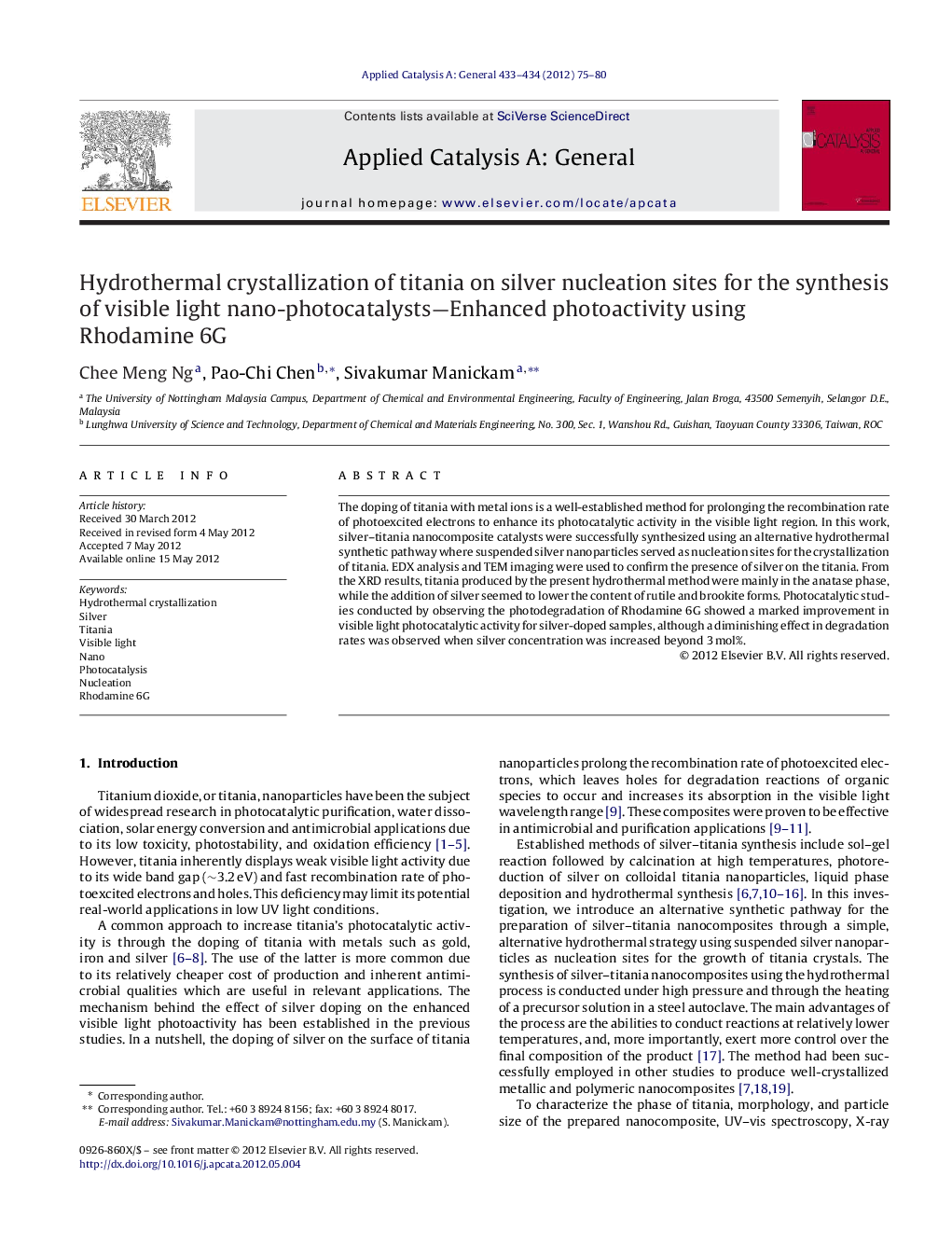| Article ID | Journal | Published Year | Pages | File Type |
|---|---|---|---|---|
| 40873 | Applied Catalysis A: General | 2012 | 6 Pages |
The doping of titania with metal ions is a well-established method for prolonging the recombination rate of photoexcited electrons to enhance its photocatalytic activity in the visible light region. In this work, silver–titania nanocomposite catalysts were successfully synthesized using an alternative hydrothermal synthetic pathway where suspended silver nanoparticles served as nucleation sites for the crystallization of titania. EDX analysis and TEM imaging were used to confirm the presence of silver on the titania. From the XRD results, titania produced by the present hydrothermal method were mainly in the anatase phase, while the addition of silver seemed to lower the content of rutile and brookite forms. Photocatalytic studies conducted by observing the photodegradation of Rhodamine 6G showed a marked improvement in visible light photocatalytic activity for silver-doped samples, although a diminishing effect in degradation rates was observed when silver concentration was increased beyond 3 mol%.
Graphical abstractFigure optionsDownload full-size imageDownload high-quality image (159 K)Download as PowerPoint slideHighlights► Silver-titania nanoparticles has been developed by using a hydrothermal process. ► Silver has been used as nucleation sites to induce crystallization. ► The pH of titania precursor was observed to influence the phase of titania formed. ► The visible light photodegradation rate of Rhodamine 6G were significantly higher. ► A lower (1%) or higher (≥5%) silver concentration diminished the degradation rates.
